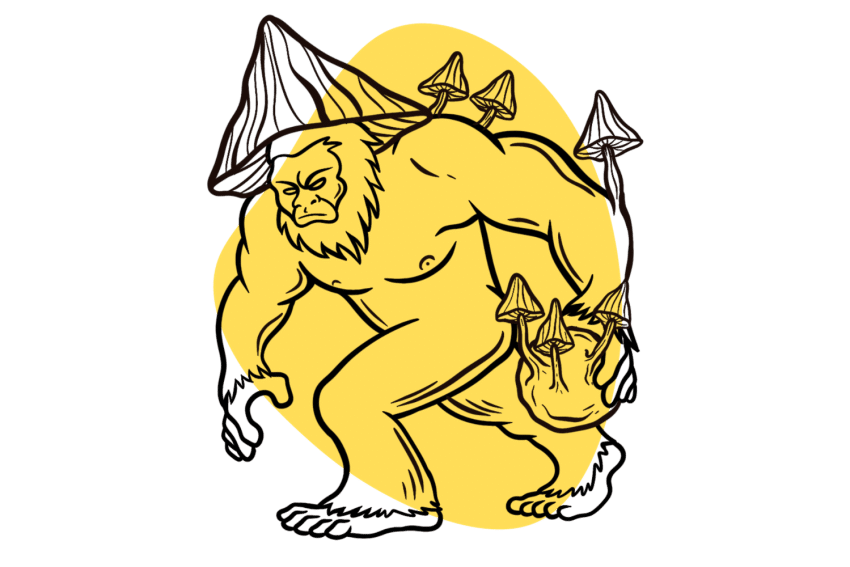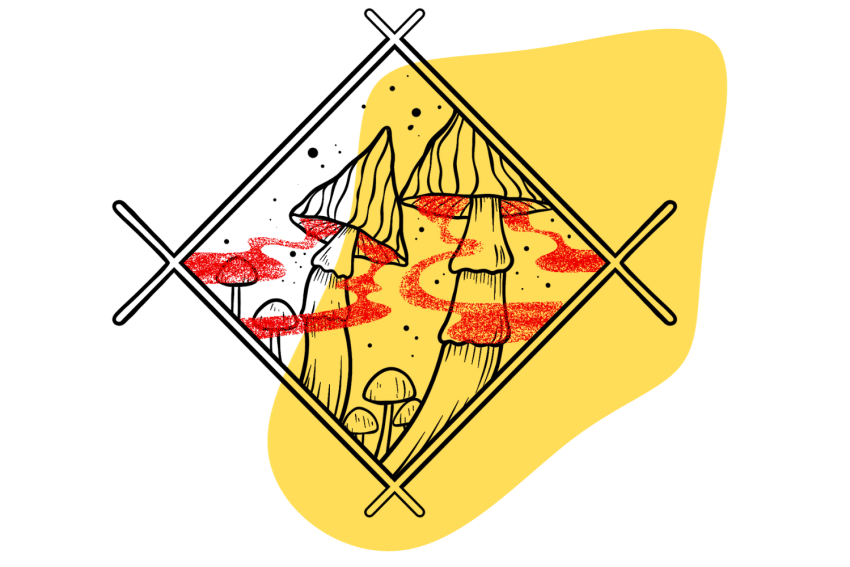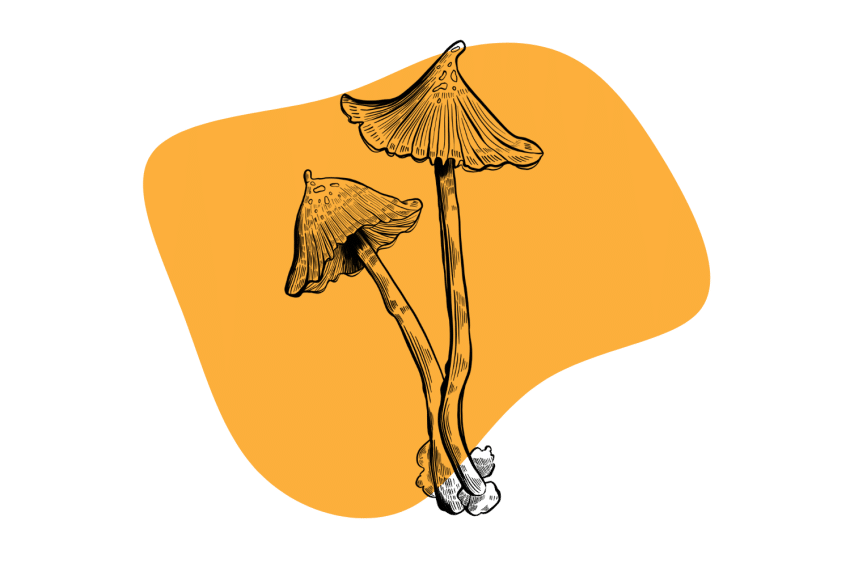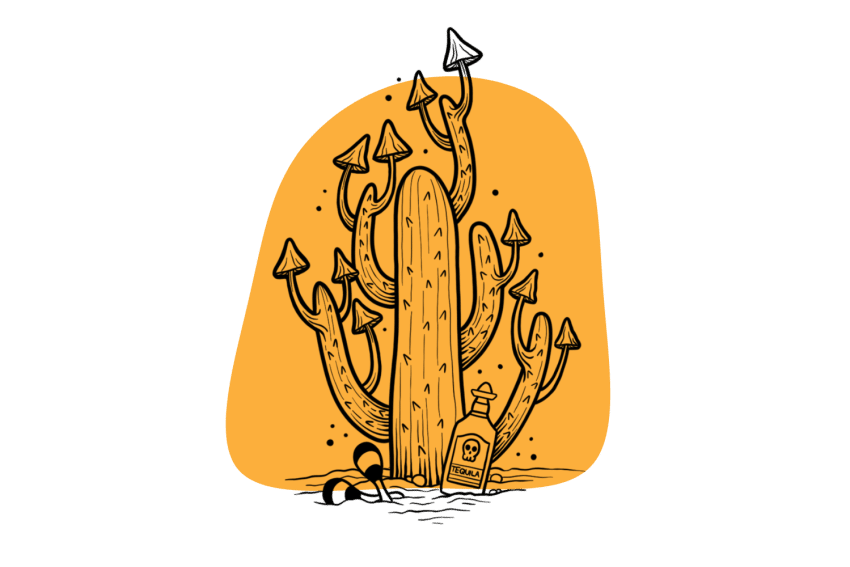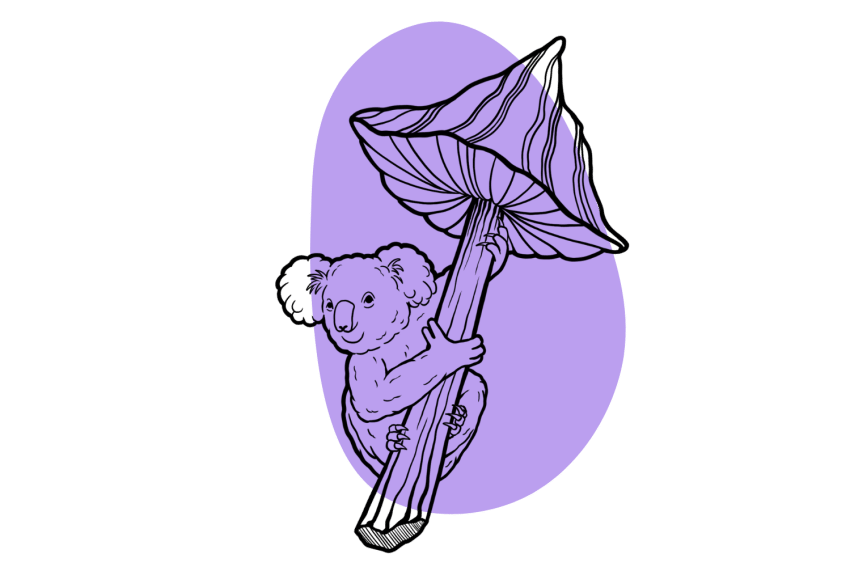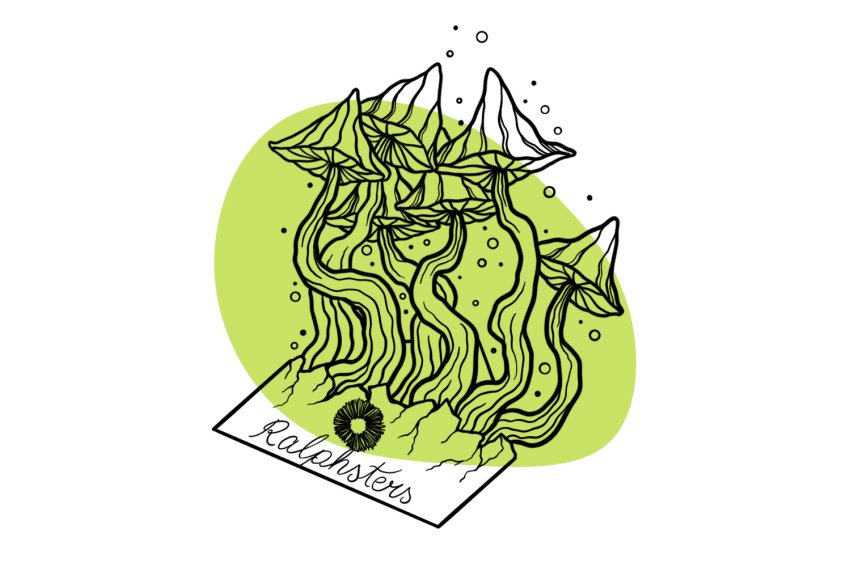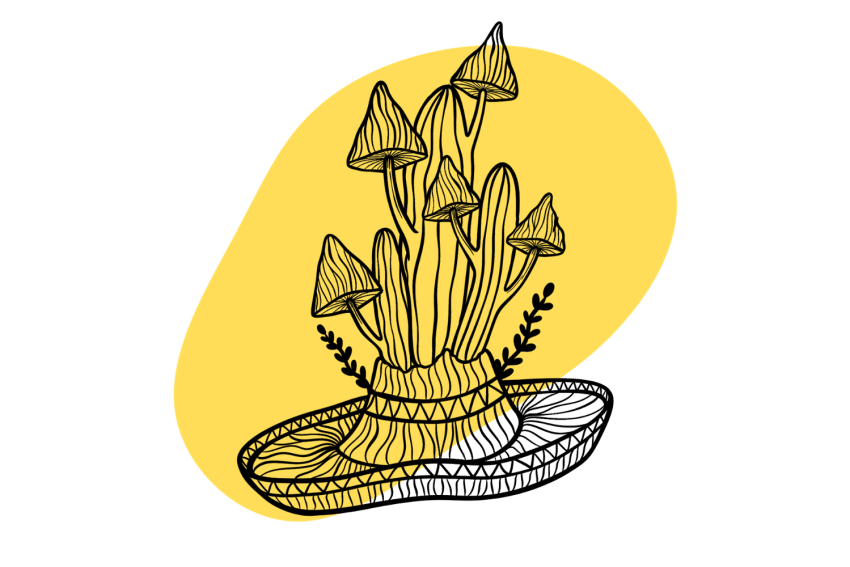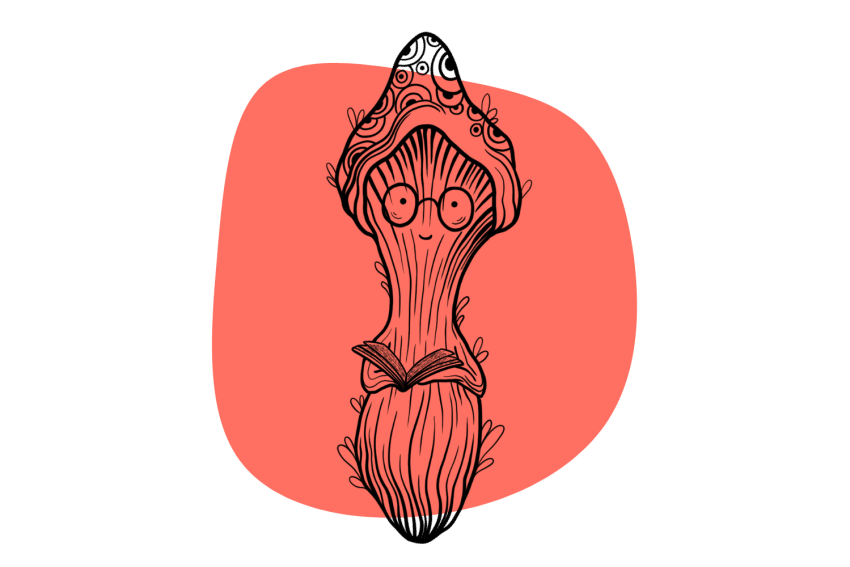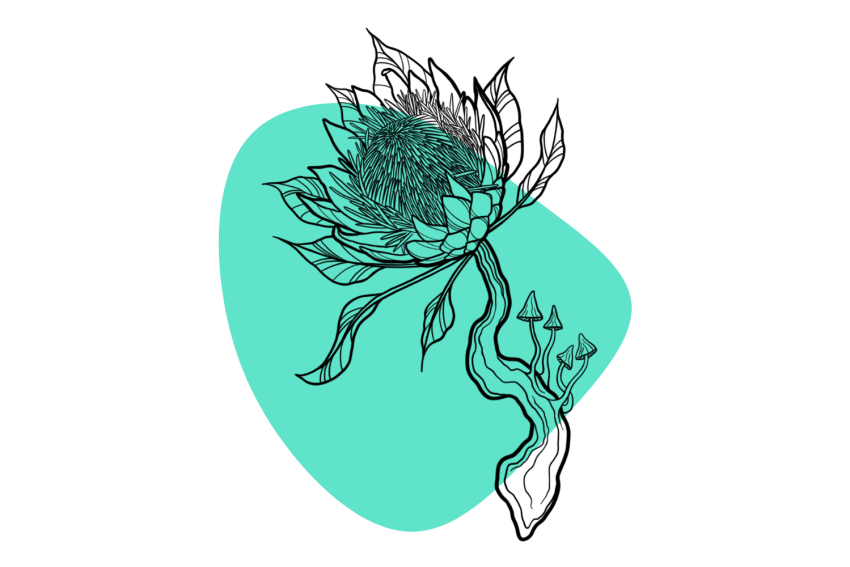The McKennaii Strain: Honoring a Legend in the Field of Psychedelics
The McKennaii strain has all the traits of a well-rounded commercial strain. It’s easy to grow, quick to colonize, and capable of producing good yields. This potent strain is a great all-rounder.
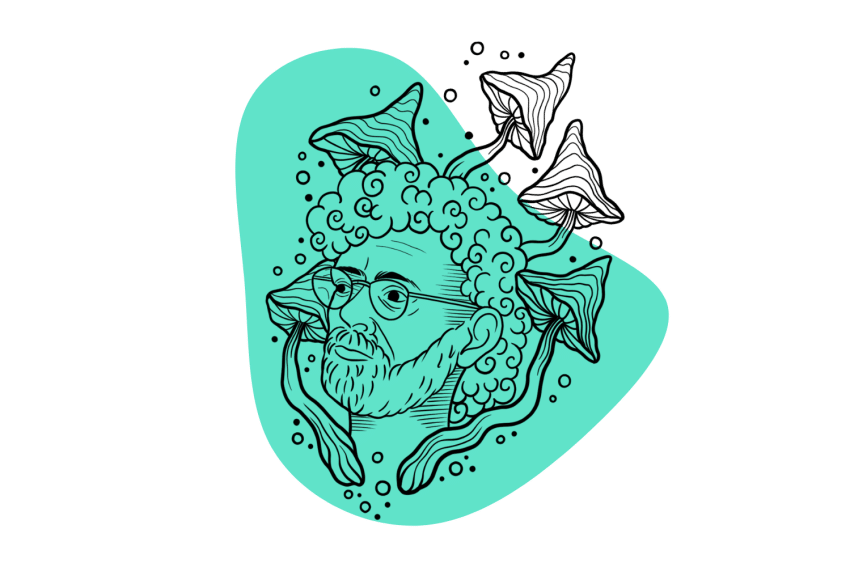
The McKennaii strain is a Psilocybe cubensis mushroom that’s named after the legendary psychedelic lecturer, author, and psychonaut, Terence McKenna. You may know Terence for his popular theory that links psychedelic substances to human evolution — the “Stoned Ape Theory.”
This mushroom has medium-sized bell-shaped caps that flatten out through maturity and stems of above-average thickness that are often wavy or slightly curved. These mushrooms often take on intense blue hues across the length of the stem and parts of the cap when dried. The cap can also turn a purplish color in maturity after sporulation.
The McKennaii strain has above-average potency, and it has impressive colonization speeds. It’s a resistant strain that can be cultivated in an unoptimized environment with excellent results — large yields are possible over several dense flushes before the colony succumbs to mold.
This is a great strain for the beginner grower or commercial cultivator that’s looking for a strain that’s easy to grow and capable of producing large numbers of mushrooms quickly.
Jump to section:
- The history of the McKennaii strain
- The McKennaii strain’s potency
- Where to buy McKennaii strain spore samples
- How to grow McKennaii mushrooms
- Some other potent easy to grow strains of Psilocybe cubensis
I’ll also be answering a few questions about the McKennaii strain, other strains of Psilocybe cubensis, and other psychedelic mushroom species in the Psilocybe genus.
→ Learn more about magic mushrooms (Magic Mushrooms 101)
McKennaii Strain Specs:
| Potency | Above Average |
| Cultivation | Beginner |
| Species | Psilocybe cubensis |
| Substrate Recommendation | Rye Grain or BRF (Brown Rice Flour) |
| Sold By | Spores 101 (🇺🇸/🇨🇦), Sporeslab (🇨🇦), Miracle Farms (🇺🇸/🇨🇦), The Magic Mushrooms Shop (🇪🇺) |
History of the McKennaii Strain
The McKenna strain — like many strains of Psilocybe cubensis — has an unclear history. However, we do know a little bit about its origins.
Although named after Terence McKenna, this strain wasn’t discovered or developed by either of the McKenna brothers. The naming is likely just a tribute to the legendary psychonaut.
There is one vague story that claims spore prints of the McKennaii strain were found among Terence’s personal belongings after he died in 2000. The spores were then cultivated and distributed from there. However, this seems highly unlikely. Surely, Terence would’ve sold the spores in his shop “Syzygy” if he had them in his collection?
The more realistic origin story is not as intriguing. The McKennaii strain was a popular mushroom in the Netherlands before magic mushrooms were criminalized. McKennaii mushrooms could be found across the country in the “Smart Shops” that sold them.
Although we don’t know where the first McKennaii mushroom sample was collected from, this strain was likely developed in the Netherlands by commercial growers. The name “McKennaii” was probably given to the mushrooms as a marketing tactic to entice buyers.
Regardless of its origins, the McKennaii strain has a lot going for it. Spore samples for this easily-grown, potent cube are available across the globe.
The McKennaii Strain Potency & Psilocybin Content
McKennaii mushrooms have above-average potency. We estimate a total tryptamine content (psilocybin, psilocin, baeocystin, and other alkaloids) of between 0.90% and 1.80%.
This strain is yet to be submitted into an Oakland Hyphae Psilocybin Cup, and there’s no test data that illustrates the exact levels of psilocybin and psilocin.
Where to Buy McKennaii Strain Spores
McKennaii cubensis spores can be purchased from a variety of reliable spore vendors across the globe. You’ll find McKennaii spore prints, sterile syringes, and swabs available for sale — the format these spores are sold depends on where you look.
Here are some of our favorite vendors that carry McKennaii spores or grow kits:
- If you live in the United States — Spores 101, Miracle Farms
- If you live in Canada — Spores 101, Sporeslab, Planet Spores
- If you live in Europe — The Magic Mushrooms Shop (🇪🇺), Shiny Spores (🇬🇧)
→ View all spore vendors & grow kit suppliers
How to Grow The McKennaii Strain
Out of the many psilocybin-producing mushroom species, Psilocybe cubensis is the easiest to cultivate. The Mckennaii strain can is a fast colonizer and fruiter. It’s easy to grow because of its contamination-resistant qualities, and good yields can be produced, even by the complete beginner.
This strain can be cultivated in the same way as other gourmet and psychedelic mushrooms. Don’t worry if you’ve never cultivated shrooms before; the process is remarkably simple.
If you want to skip the tedious parts associated with magic mushroom cultivation, perhaps a magic mushroom grow kit is a better option for you. These kits contain live mycelium and are ready to fruit — meaning that you can harvest shrooms in as little as a week with minimal effort.
The easiest way to grow McKennaii mushrooms from spores is by using a cultivation technique known as PF-Tek — Psilocybe Fanaticus Technique.
This method involves some very basic pieces of equipment that can be obtained from typical hardware stores, pet shops, and garden centers. Some basic knowledge is needed, and you’ll need to learn how to keep some equipment sterile, but the technique as a whole is easy to grasp.
Here’s a rundown of how to grow McKennaii mushrooms using PF-Tek:
1. Preparing the Growing Medium
McKennaii mushrooms will grow on most substrates. However, they do particularly well on BRF cakes (brown rice flour mixed with vermiculite). A selection of mason jars must be filled with the substrate, sealed loosely with the lids, and placed in a pressure cooker for 30 minutes — this will sterilize the substrate.
The jars will need to be left to cool inside the cooker for two to three hours after sterilization before the next step.
2. Inoculating the Substrate-Filled Jars
The next step requires a spore syringe filled with McKennaii spores. Everything must be kept as sterile as possible during this phase — if any bacteria is introduced to the growing environment, it can outcompete the mycelial growth from the mushroom spores.
The needle of the spore syringe must be sterilized with a flame, and everything else used, including the environment around you, should be cleaned with isopropyl alcohol. Then, 2 CCs of the spore solution is injected into the substrate. The jars can then be sealed, and the lids covered with foil.
3. Incubating the Spores
Once the jars have been inoculated, they must be kept in a warm dark place for a couple of weeks to allow the mycelium to form over the substrate. A simple incubator can be made using a couple of containers and an aquarium heater.
They should be left in the incubator at a temperature of between 20 to 28 ºC (68 to 82 ºF) until the jars look completely white with mycelium.
4. Fruiting the Mycelium Cakes
The resulting mycelium cakes can now be removed from the jars and carefully placed into a fruiting chamber — a simple heated container with ventilation. The chamber should be kept between 10 to 20 ºC (50 to 68 ºF) and moistened regularly with a spray bottle to keep the humidity level high.
After a few days, the first pinheads (small baby mushrooms) will begin to form — don’t touch these, as they’re sensitive when young. Over the next week, those small pinheads will mature into full-size mushrooms. Once mature, but ideally, before the mushrooms sporulate, they should be harvested carefully.
The mushrooms can then be air-dried or dehydrated and stored in air-tight jars for future use. The mycelium cakes will continue to fruit over the coming weeks until the colonies eventually succumb to mold growth.
This was just a basic brief on how PF-Tek is performed. You won’t be able to cultivate mushrooms with this information alone.
If you want to learn how to cultivate Psilocybe cubensis shrooms properly, have a read through our comprehensive guide: How To Grow Magic Mushrooms
Other Potent Easy to Grow Strains
The McKennaii strain is surprisingly easy to grow for such a potent magic mushroom. Most strains that are marketed to the beginner cultivator are relatively mediocre in terms of psilocybin and psilocin content. However, there are a fair few easy-to-grow strains that produce decent tryptamine levels.
Here are some potent easy-to-grow strains:
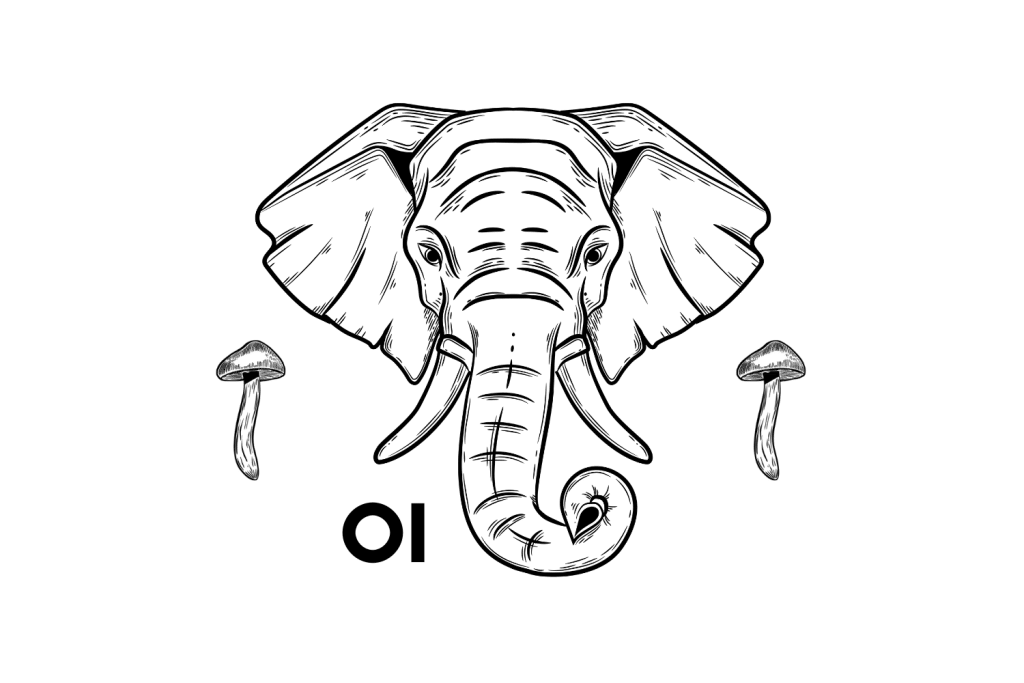
1. The Orissa India Strain
The Orissa India strain was first collected from a patch of cow manure outside a temple in Orissa, India — hence the name.
This strain is notorious for producing truly colossal fruits. This strain once held the title for the biggest ever cultivated Psilocybe cubensis mushroom. Not only are Orissa India mushrooms huge, but they’re also remarkably potent — producing total tryptamine levels of over 1.5%.
This strain is easy to grow thanks to its contamination-resistant qualities. However, care must be taken during the fruiting phase to ensure the large, heavy mushrooms stay upright.
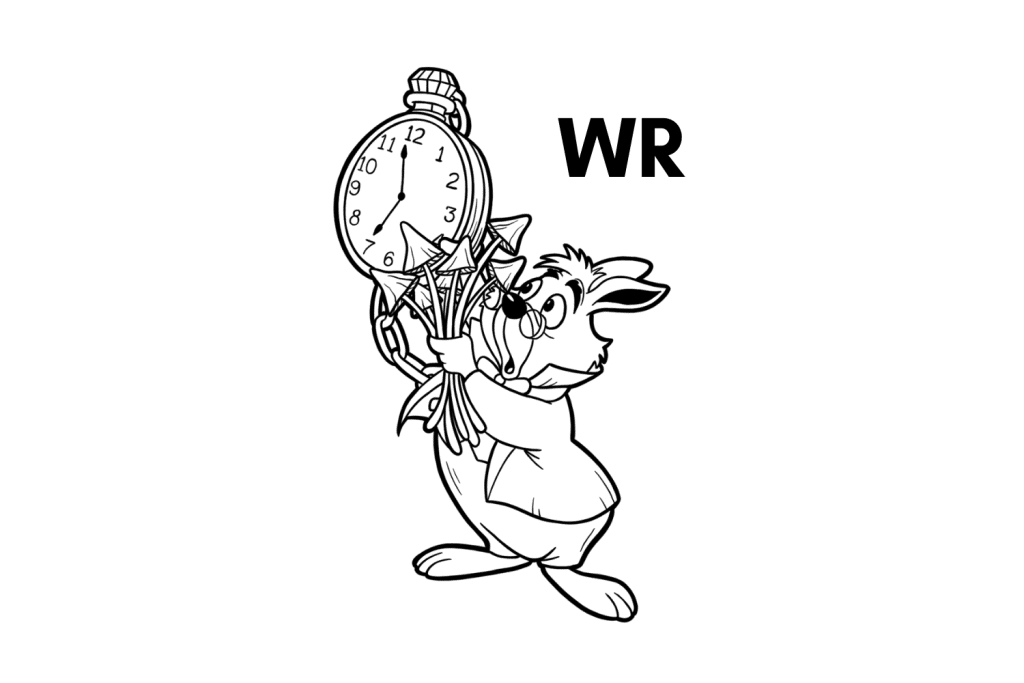
2. The White Rabbit Strain
White Rabbit is an albino strain of Psilocybe cubensis that was developed by a group of cultivators in Holland. This strain is a cross between the Penis Envy and Moby Dick strains — two strains renowned for their potency.
Surprisingly, for an albino, the White Rabbit strain is easy to cultivate, even for beginners. It’s contamination resistant and is capable of growing g in an unoptimized environment.
The potency of White Rabbit mushrooms is impressive. Although we don’t have any exact data, through user reports, we estimate that this strain is capable of producing anywhere up to around 1.60% psilocybin.
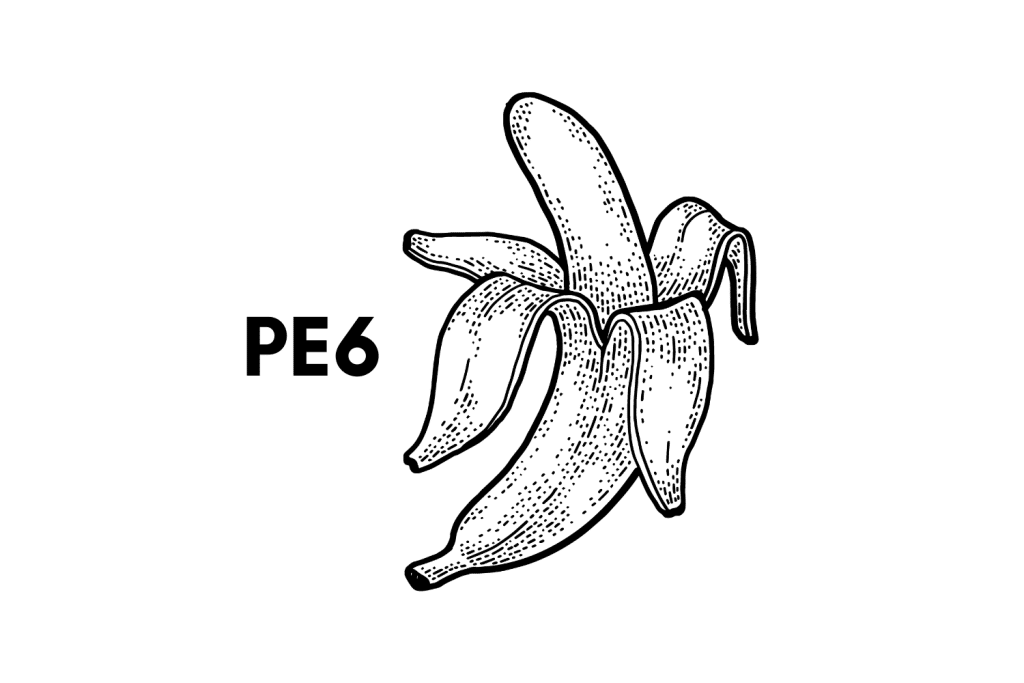
3. The Penis Envy #6 Strain
The Penis Envy #6 strain is a cross between the original Penis Envy and Texas strains — both renowned for their potency.
This strain is far easier to cultivate compared to other strains in the Penis Envy series.
User reports suggest that the mushrooms are very potent. However, samples entered into the Psilocybin Cup haven’t produced the super high tryptamine levels expected. One sample, cultivated by “HSSS Cultivation Coalition,” produced psilocybin and psilocin levels of 0.63% and 0.08%, respectively. These results aren’t staggering, but it does put the mushroom in the above-average potency category.
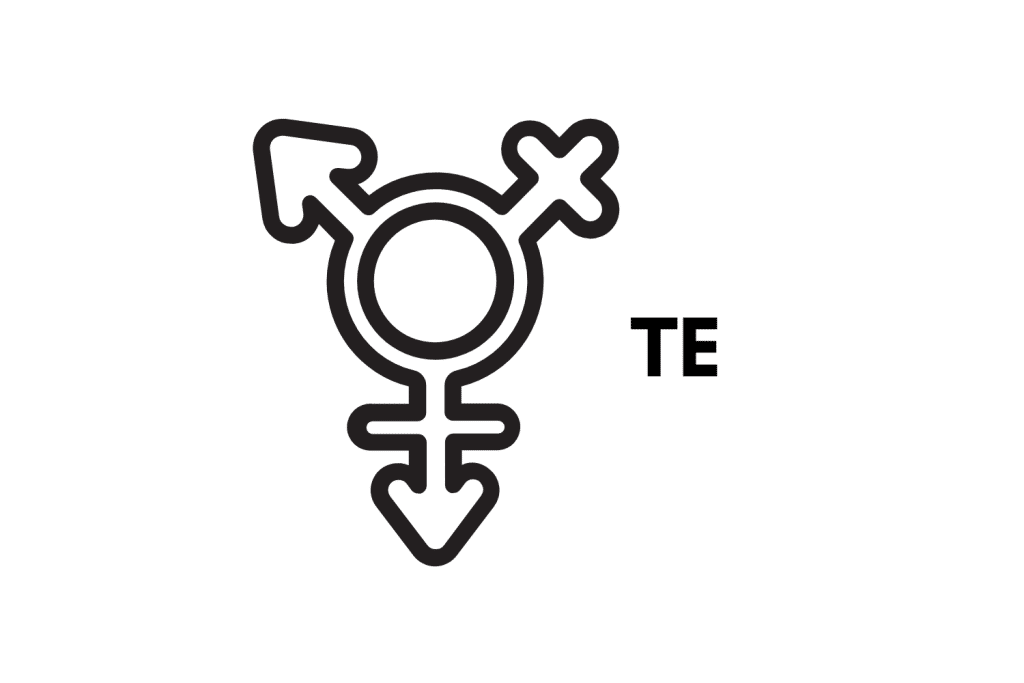
4. The Trans Envy Strain
The Trans Envy Strain is a cross between Penis Envy and South African Transkei. This strain was created by accident when the two mother strains were inadvertently mixed in the same fruiting tray.
Regardless of its accidental creation, this strain has a lot going for it. It’s contamination resistant, can grow in an unoptimized environment, and produces impressive tryptamine levels.
With features from both Penis Envy and South African Transkei, this potent Psilocybe is intriguing. Total tryptamine levels of Tand Envy are estimated to be as high as 2.50%.
Frequently Asked Questions: McKennaii Magic Mushrooms
If you have any questions about this strain, feel free to reach out to us at high@tripsitter.com.
1. Who Was Terence McKenna?
Terence McKenna — the man the McKennaii Strain was named after — was an influential American ethnomycologist, author, and experienced psychonaut. He was born in 1946 and died in 2000.
Terence and his brother Dennis traveled the world extensively in search of psychoactive plants and fungi. Their most famous expedition was to the Amazon to seek out Ayahuasca — a psychedelic Amazonian brew that contains DMT.
On their travels, the two brothers collected several samples — many of which were Psilocybe mushrooms — and introduced them to the Western world.
Terence and Dennis went separate ways with their work — with Terence focusing mostly on the intersection of consciousness, shamanism, ethnomycology, and the potential of psychedelics in expanding human consciousness.
He developed several unique theories and perspectives — many of which are out of this world — on the nature of human consciousness, reality as a whole, time, and the role of psychedelics in human evolution.
His most famous hypothesis is the “Stoned Ape Theory,” which proposed the consumption of psychedelic fungi by early human ancestors played a significant role in the development of human cognition and modern language. This theory suggests that the ingestion of psychedelic substances influenced brain development and contributed to the evolution of man — the reason we became “superior” to the other primates of Earth.
Terence McKenna was a captivating human. His lectures on psychedelics, and particularly his first-hand experiences with psychedelic mushrooms and DMT, inspired many (now) influential minds in the psychedelic field.
Even after his death, Terence McKenna’s work remains widely discussed and debated among the psychedelic community.
2. How Many Strains of Psilocybe cubensis Exist?
It’s difficult to put an exact number on how many strains of Psilocybe cubensis exist because new strains are appearing all the time. However, there are definitely over 100 different strains that make up the species.
Although each strain is similar in that they all belong to the same species, they can differ greatly in appearance, growth characteristics, and tryptamine content. Some strains occur naturally and are the product of environmental adaptation, but others are created through genetic manipulation.
We create strains through selective breeding and cross-cultivation. Strains have been created from genetic mutations through isolated — albino varieties, for example. Other strains have been created through cross-cultivation to improve potency, yield, and appearance.
3. What’s the Most Potent Psilocybe Mushroom Species?
Although the most popular and common species, the most potent mushroom in the Psilocybe genus isn’t Psilocybe cubensis. The most potent species is a mushroom known as Psilocybe azurescens.
Psilocybe azurescens is capable of producing psilocybin levels of 1.80% or more (dried weight) — that’s three to four times as potent as a typical strain of Psilocybe cubensis.
This species is native to the Pacific Northwest region of North America — specifically the states of Oregon and Washington. It’s commonly found growing in coastal dune grasses and on wood debris, particularly in areas close to the ocean.
Psilocybe azurescens is notoriously difficult to cultivate in an artificial environment — Psilocybe cubensis is a much easier species in this respect. However, many have had good results growing P.azurescens mushrooms outdoors in beds filled with deciduous wood chips, mulch, and other decomposing materials.

